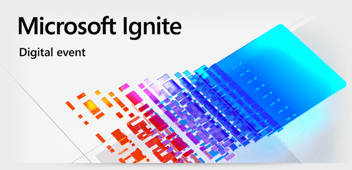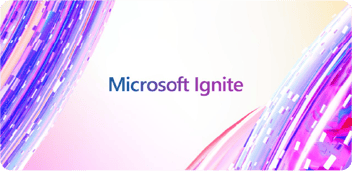I’m writing this from a café in a ski resort in southern Finland. My kids are downhill skiing, each with their respective styles, and I was allowed to get coffee and focus on writing this. It’s a respectable -5 C (23 F) and very windy, so I am happy to enjoy my warm caffeine with my thoughts.
Recapping Microsoft announcements starting with Ignite
Ignite 2024 took place in Chicago in late November, and ESPC was in Stockholm, Sweden, a week after that, in early December. Although I would have liked to attend both events in person, I opted for a remote viewing of Ignite and an in-person ESPC.
Usually, I like to write a recap of the announcements and initial thoughts during the event. Those are some hectic hours – listening to keynotes, capturing thoughts simultaneously, and searching for additional information on stuff that is barely out of the figurative release oven. I like it when life gets busy, but I’ve also realized – perhaps through reflecting that I am not 20 years old anymore – that sometimes you need to pause and think about what was published. After a few weeks of deliberation, I now have more to say.
Ignite – keynotes and hero announcements

As expected, the main keynote speaker during Ignite will be Satya Nadella. It ran a bit over the allocated time, which I don’t mind – so much stuff was talked about. I attended the keynote at a remote viewing party in Helsinki, and it was an unexpectedly good experience: you can hear everyone’s thoughts immediately and pick their brains while having a nice dinner, and the keynote is blasting in the background
This year, I heard it loud and clear from everyone around me and on social media: Ignite is fast pivoting to a more non-technical event regarding keynotes, announcements, and the feel. And while I might say this as a deeply technical person in hear, I like it. It’s about time Ignite matured into a more business-oriented event. Listening to a new esoteric silicon chip humming in the Azure data centers is excellent. Still, it does very little to me regarding business, projects, and personal ambitions beyond the name and use cases.
What matters more is where customers and business demand are heading. Sometimes, I feel Microsoft is very aligned with the consensus; other times, I think Microsoft has to pave the way and repeat the same things repeatedly.
As expected, Ignite is currently built around two things: generative AI, which means Copilot capabilities, and the next logical step after Copilots: agents. The keynotes and main messages aimed to create a comprehensive picture: once you opt for these new capabilities and embrace the possibilities, you’ll soon realize you cannot work without them.

It's still a way to go for most businesses I’m exposed to. Agents, which in short imply autonomous capabilities driven by generative AI and integrations to task-achieving tools, are still in their infancy. I’m excited, though – I’d wager it’s still a couple of solid years before they mature enough for anyone and everyone to use them like you would use a translation tool in Word or autocorrect in Outlook. I’m scoring agent capabilities on how well they would eventually perform many of my job's tiny and more significant tasks. So far, it’s not even making a dent.
Along with the evolution of Copilot, another major announcement was Azure Local. In short, this is the on-premises and local data center version of self-hosted Azure capabilities. Previously, it was known as Azure Stack and, before that, Azure Pack.
I’m surprised by Azure Local. It’s much lighter, and you can even spin it up in a virtual machine at home, requiring just 24 GB of RAM for testing. Management of Azure Local now happens via Azure Arc, which is the obvious way to manage remote and disconnected devices and platforms.
After Ignite tried out Azure Local, I spent most of the evening. It works in a small lab environment, but it still requires the usual gray and dull infrastructure to support it: Active Directory, DHCP, DNS, and similar. In hopes of eventually seeing the Entra ID-only version of Azure Local, it’s off to a promising start. Why would anyone need this, though?
Considering Windows Server 2025 was released just before Ignite kicked off, the main reason might be that Microsoft needs these. In addition, these two make perfect sense for anyone needing to offload services and data from the public Azure. I’m still attending workshops almost weekly, where one of the ambitions is to consider exit plans from Azure, but also for disaster recovery and business continuity reasons. “Can we run Azure Virtual Desktop locally?” as it would probably give us very low latencies compared to West Europe or Sweden Central right now.
Take a look at these
I’d advise to dive deeper also into the following announcements and new releases from Ignite 2024:
- Azure Local – getting started
- Copilot Studio release wave (until March 2025)
- Copilot Actions (Ignite session BRK274)
- Copilot Control System (Ignite session)
- Copilot Analytics
- Azure AI Foundry (formerly: Azure AI Studio)
- SQL Database in Microsoft Fabric
- Microsoft Security Exposure Management
Stay tuned for the next installment where we dive into ESPC!
A note from Rencore
As we navigate the rapidly evolving landscape of cloud collaboration technologies, it's crucial to recognize the importance of a modern governance plan. Rencore Governance stands at the forefront of this evolution, continuously adapting to align with Microsoft's latest roadmap. This ensures you maintain complete control over your Microsoft 365 technologies, including emerging tools like Generative AI and AI Agents.
The introduction of Copilot and Copilot Agents in the Microsoft ecosystem brings exciting opportunities for enhanced productivity and innovation. However, it also introduces new challenges in terms of data security, compliance, and responsible use. As organizations begin to experiment with these powerful AI tools or anticipate widespread adoption, it's essential to proactively address governance concerns.
Don't wait until it's too late to implement robust governance measures. By integrating Rencore Governance into your strategy now, you can confidently explore the potential of Copilot and Copilot Agents while maintaining the necessary oversight and control. This proactive approach will help you maximize the benefits of new technologies while mitigating potential risks.
Learn more about how Rencore Governance can help you stay in control of Copilot, Agents, and other cutting-edge Microsoft 365 technologies.

.png?width=703&height=343&name=Header_blog_Microsoft%20Ignite%202024%20(1).png)


